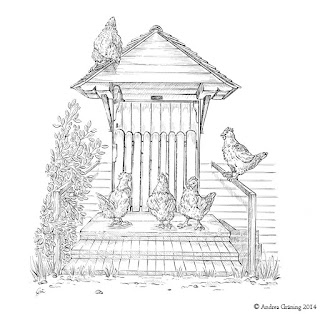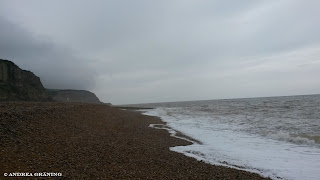The last of the frames I did for Bateman's. This one shows the entrance to the main building and is meant for the new German guide. Some of the proportions had to be altered though to make it fit the size of the paper. Also, while doing colour drawing was the obvious choice for the garden pictures, I decided to keep this one in black and white as a nod the drawings done for Rudyard Kipling by his father, John Lockwood Kipling.
One day I was approached by the head gardener who asked if I could draw a plant map for the Mulberry Garden which the visitors could carry around with them while walking through the garden. Since I had never done something like this before and always enjoy a new task, I agreed. The whole project proved to be a lot of fun but was also more work than one might think due to the large number of different plants and the high temperatures outside with no shade anywhere. At least now I know to put on sun glasses the next time I am going to scribble for a prolonged time on white paper while the sun is shining so brightly as the former reflects the latter just wonderfully.
On another occasion I was requested to do a very simple sign to let the visitors know that for so and so reasons the old watermill would be closed for a couple of days. It was really meant to be just a white sheet of paper with a bit of text but I thought there sure must be a way to make even a piece of information like that a bit interesting for the visitors. So I made a drawing of the closed entrance to the mill with some of the head gardener's chicken outside, and put it on the sign as well.
The reason for the chickens' presence in the picture is the fact that - when they are not busy begging the French tourists for croissants - they love trying to get inside the mill which they are not supposed to do for hygienic reasons as there is also flour and grain stored inside. This is why the mill does not have only a normal door but also an additional fence in front of it so that during the day the door can be kept open.




